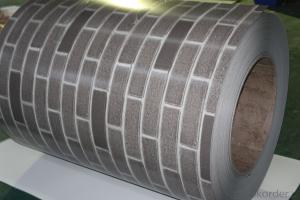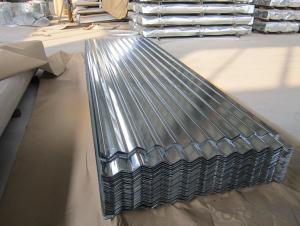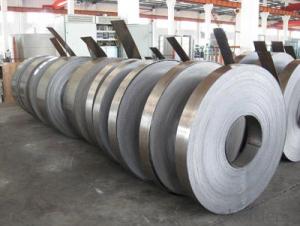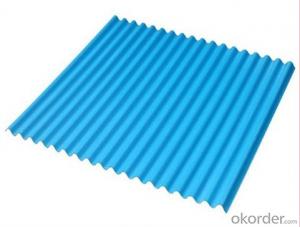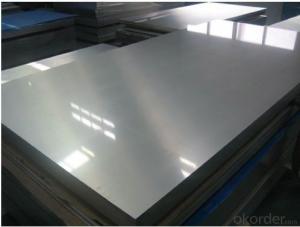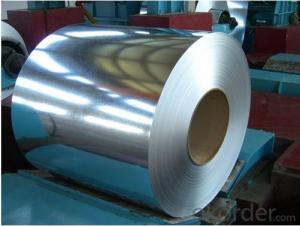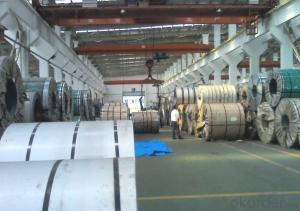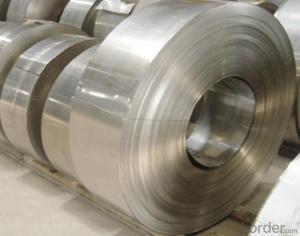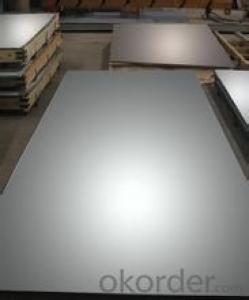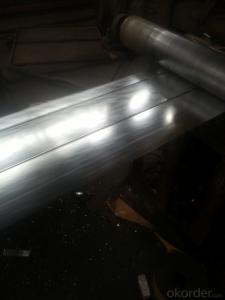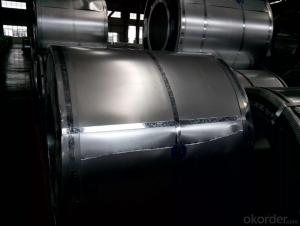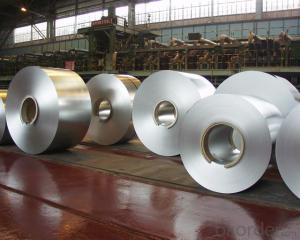Stone Pattern Printing Steel Plate-1.00mm*1250mm Z60g
- Loading Port:
- Tianjin
- Payment Terms:
- TT OR LC
- Min Order Qty:
- 50 m.t.
- Supply Capability:
- 5000 m.t./month
OKorder Service Pledge
OKorder Financial Service
You Might Also Like
Stone Pattern Printing Steel Plate-1.00mm*1250mm Z60g
1.Refrigerator shutter &side panels, Washer, Freezers, Air conditions,
2.Rice Cooker, Microwave Ovens, Water Heaters, Sterilization Cabinets, Range Hoods
3.Computer Panels , DVD/DVB panels, TV back panel etc.
Teaching Board: whiteboard, blackboard, green board(chalk board).
Indoor Decoration: Fireproof Door, kitchen cabinet, wall decoration.
Shipping Industries: Ship, Fecht, Marine.



Teaching Board: whiteboard, blackboard, green board(chalk board).
Indoor Decoration: Fireproof Door, kitchen cabinet, wall decoration.
Shipping Industries: Ship, Fecht, Marine.

1.strong corrosion resistance
2.surface quality
3.conducive to deep processing,such as the embossed PPGI,printed PPGI&punching PPGI
4.economy and practicality

1.Thickness:0.16-2.0mm
2.Width:600-1500mm
3.Material: SGCC,SGCD,SECC,SECD,DX51D+Z
4.Zinc coating:40-275G/M2
5.Surface Structure: galvanized ,zero spangle, regular spangle or normal spangle
6.Surface treatment: chromated and oiled, chromated and non-oiled
7.Color:all RAL series
- Q:Are steel strips used in the production of metal brackets and supports?
- Yes, steel strips are commonly used in the production of metal brackets and supports. Steel strips are highly versatile and offer excellent strength and durability, making them ideal for constructing brackets and supports that need to bear heavy loads or provide structural stability.
- Q:How are steel strips used in the production of electronics?
- The production of electronics relies on the utilization of steel strips in various manners. One prevalent application involves their use in the manufacturing process of printed circuit boards (PCBs). These PCBs are essential elements within electronic devices as they serve as platforms for the mounting and interconnecting of diverse electronic components. By serving as a base material, steel strips offer stability and support to the PCBs. Additionally, electronic enclosures also employ steel strips during production. These enclosures act as protective housing for the internal components of electronic devices, shielding them from external factors including dust, moisture, and physical harm. Steel strips are frequently employed in constructing the frames or outer shells of these enclosures, guaranteeing both strength and durability. Moreover, connectors and terminals, vital for establishing connections between different parts of electronic devices such as cables, wires, and circuit boards, rely on steel strips during production. By utilizing steel strips, manufacturers are able to create reliable and robust connections, ensuring the efficient transmission of electrical signals. In conclusion, steel strips assume a pivotal role in the production of electronics by acting as a base material for PCBs, providing structural support to electronic enclosures, and enabling the creation of connectors and terminals. Their durability, strength, and conductivity make them an indispensable component within the manufacturing process of electronic devices.
- Q:How do steel strips compare in terms of cost?
- Steel strips can vary in cost depending on factors such as the grade, thickness, and width of the strip. Generally, steel strips are competitively priced compared to other materials with similar qualities, making them a cost-effective option for various applications. However, the exact cost comparison can vary depending on specific requirements and market conditions.
- Q:Can steel strips be used in the production of storage tanks?
- Yes, steel strips can be used in the production of storage tanks. Steel strips are often used as a primary material in tank manufacturing due to their strength, durability, and resistance to corrosion. They can be shaped and welded together to create the desired tank size and shape, providing a reliable and long-lasting storage solution.
- Q:Can steel strips be used in the manufacturing of hand tools?
- Hand tools can indeed be manufactured with steel strips. The manufacturing industry frequently opts for steel due to its robustness, longevity, and resistance to damage. Steel strips can be easily fashioned into multiple elements of hand tools, including blades, handles, and sockets. Moreover, steel can be subjected to heat treatment to increase its hardness and strength, which is particularly beneficial for tools necessitating sharp cutting edges or enduring heavy-duty tasks. All in all, steel strips are an adaptable and trustworthy material that can be efficiently employed in the production of hand tools.
- Q:How are steel strips used in the production of tools and equipment?
- Steel strips are widely used in the production of tools and equipment due to their strength, durability, and versatility. These strips are often made from high-quality steel, which provides excellent mechanical properties such as hardness, toughness, and resistance to wear, corrosion, and impact. One of the primary uses of steel strips in tool and equipment production is for creating the cutting edges of various tools. For example, knives, scissors, and saw blades are manufactured by shaping and sharpening steel strips to form a sharp cutting edge. The strength and hardness of the steel strips ensure that these tools can effectively cut through various materials with precision and efficiency. Additionally, steel strips are utilized in the production of hand tools, such as wrenches, pliers, and screwdrivers. These strips are often bent, shaped, and forged into the desired tool shape, providing strength and rigidity to withstand the forces applied during use. The durability of steel strips ensures that these tools can withstand repeated use without deformation or breakage. In the manufacturing of industrial equipment, steel strips are commonly used for constructing machine parts and components. These strips can be formed, welded, and machined into intricate shapes and structures, providing the necessary strength and stability for heavy-duty applications. Steel strips are also utilized in the production of molds and dies, which are crucial for manufacturing complex parts and components. Furthermore, steel strips are essential in the production of automotive and aerospace equipment. They are used to fabricate body panels, chassis components, and structural parts. The high strength-to-weight ratio of steel strips makes them ideal for these applications, as they contribute to the overall strength and safety of the vehicles or aircraft. Overall, steel strips play a vital role in tool and equipment production by providing the necessary strength, durability, and versatility required for various applications. Their ability to be shaped, machined, and formed into different forms makes them a preferred material choice in industries where reliable and high-performance tools and equipment are necessary.
- Q:What is the role of steel strips in the manufacturing of consumer goods?
- Steel strips have a significant impact on the production of consumer goods. They are widely used as a raw material in different industries due to their exceptional strength, durability, and versatility. These strips are typically made from carbon steel, which is an alloy of iron and carbon. One primary application of steel strips in consumer goods manufacturing is seen in the production of appliances. Steel strips are commonly employed to manufacture the outer shells or frames of refrigerators, ovens, washing machines, and other household appliances. The high tensile strength of steel ensures that these products can endure the rigors of daily use and provide long-lasting performance. Similarly, furniture and fixtures also make use of steel strips in their fabrication. These strips are commonly used in constructing metal cabinets, shelves, and storage units. Steel strips not only provide the necessary structural integrity to support heavy loads but also offer resistance against corrosion and wear, ensuring the longevity of the finished products. In the automotive industry, steel strips are extensively utilized in producing various components. They are employed in manufacturing body panels, chassis, doors, and other structural parts of vehicles. Steel's strength and malleability make it an ideal material for withstanding the forces and impacts encountered on the road, ensuring passenger safety and vehicle durability. Furthermore, steel strips play a crucial role in the manufacturing of consumer goods like tools, hardware, and machinery. These strips are frequently used to create blades, springs, fasteners, and other components that require high strength and precision. Steel's ability to be easily shaped and formed makes it an excellent choice for these applications, allowing for the production of intricate and reliable parts. In conclusion, steel strips play a vital role in the manufacturing of consumer goods. Their strength, durability, and versatility make them an ideal raw material across various industries. From appliances and furniture to automotive components and tools, steel strips are crucial in creating reliable, long-lasting, and high-performing consumer goods.
- Q:Are steel strips suitable for the manufacturing of oil rig equipment?
- Yes, steel strips are suitable for the manufacturing of oil rig equipment. Steel strips offer high strength, durability, and corrosion resistance, making them ideal for withstanding harsh offshore environments. Additionally, steel strips can be easily shaped, welded, and fabricated to meet the specific requirements of oil rig equipment, ensuring reliable and long-lasting performance.
- Q:Are steel strips prone to rusting?
- Yes, steel strips are prone to rusting as they typically contain iron, which reacts with moisture and oxygen in the air to form iron oxide (rust).
- Q:How are steel strips packaged for shipment?
- Steel strips are typically packaged for shipment by being tightly coiled and wrapped with protective materials such as plastic or paper. They are then secured with steel banding or strapping to ensure stability during transportation.
1. Manufacturer Overview |
|
|---|---|
| Location | |
| Year Established | |
| Annual Output Value | |
| Main Markets | |
| Company Certifications | |
2. Manufacturer Certificates |
|
|---|---|
| a) Certification Name | |
| Range | |
| Reference | |
| Validity Period | |
3. Manufacturer Capability |
|
|---|---|
| a)Trade Capacity | |
| Nearest Port | |
| Export Percentage | |
| No.of Employees in Trade Department | |
| Language Spoken: | |
| b)Factory Information | |
| Factory Size: | |
| No. of Production Lines | |
| Contract Manufacturing | |
| Product Price Range | |
Send your message to us
Stone Pattern Printing Steel Plate-1.00mm*1250mm Z60g
- Loading Port:
- Tianjin
- Payment Terms:
- TT OR LC
- Min Order Qty:
- 50 m.t.
- Supply Capability:
- 5000 m.t./month
OKorder Service Pledge
OKorder Financial Service
Similar products
New products
Hot products
Hot Searches
Related keywords
